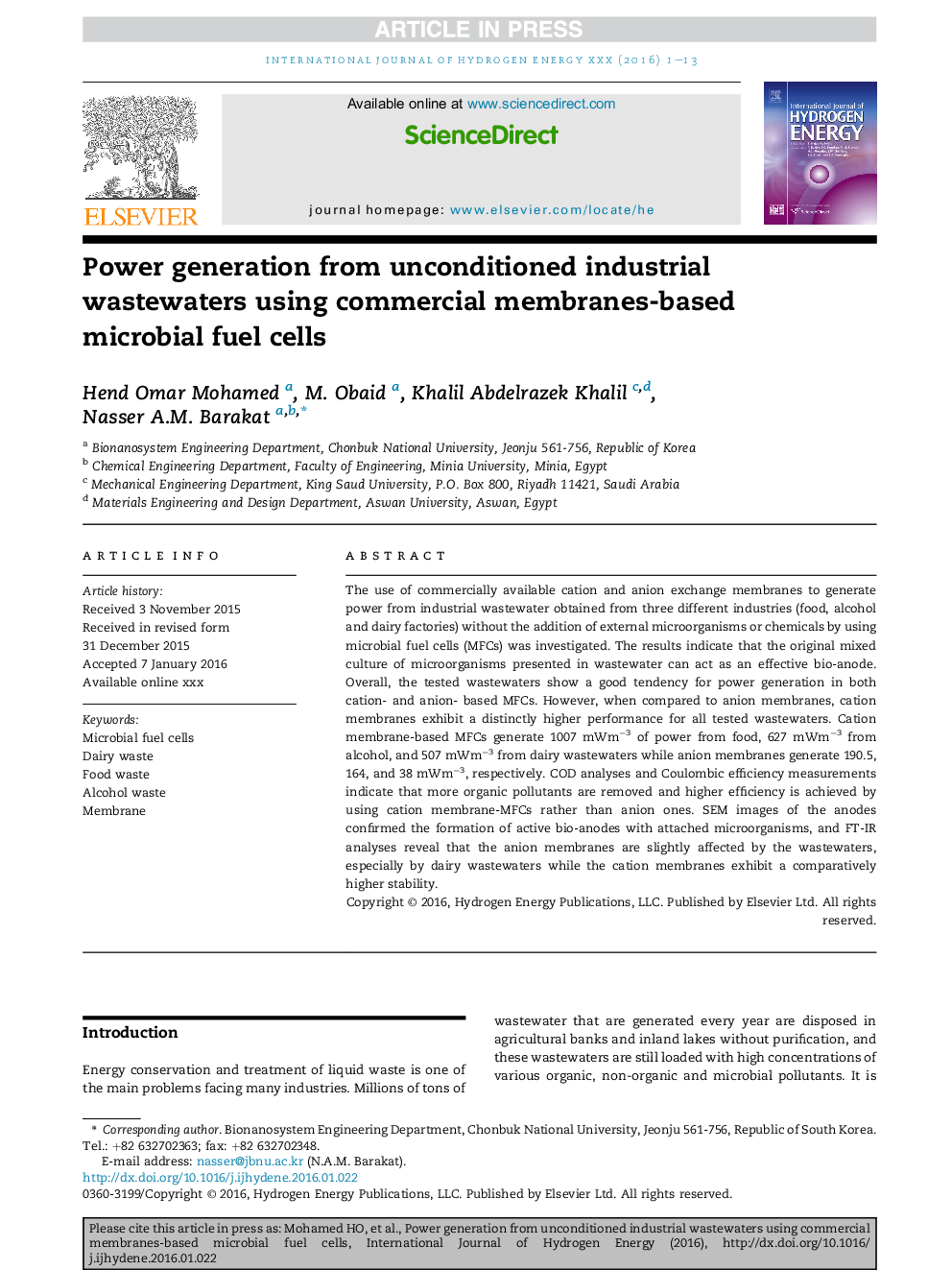| Article ID | Journal | Published Year | Pages | File Type |
|---|---|---|---|---|
| 7711409 | International Journal of Hydrogen Energy | 2016 | 13 Pages |
Abstract
The use of commercially available cation and anion exchange membranes to generate power from industrial wastewater obtained from three different industries (food, alcohol and dairy factories) without the addition of external microorganisms or chemicals by using microbial fuel cells (MFCs) was investigated. The results indicate that the original mixed culture of microorganisms presented in wastewater can act as an effective bio-anode. Overall, the tested wastewaters show a good tendency for power generation in both cation- and anion- based MFCs. However, when compared to anion membranes, cation membranes exhibit a distinctly higher performance for all tested wastewaters. Cation membrane-based MFCs generate 1007Â mWmâ3 of power from food, 627Â mWmâ3 from alcohol, and 507Â mWmâ3 from dairy wastewaters while anion membranes generate 190.5, 164, and 38Â mWmâ3, respectively. COD analyses and Coulombic efficiency measurements indicate that more organic pollutants are removed and higher efficiency is achieved by using cation membrane-MFCs rather than anion ones. SEM images of the anodes confirmed the formation of active bio-anodes with attached microorganisms, and FT-IR analyses reveal that the anion membranes are slightly affected by the wastewaters, especially by dairy wastewaters while the cation membranes exhibit a comparatively higher stability.
Related Topics
Physical Sciences and Engineering
Chemistry
Electrochemistry
Authors
Hend Omar Mohamed, M. Obaid, Khalil Abdelrazek Khalil, Nasser A.M. Barakat,
